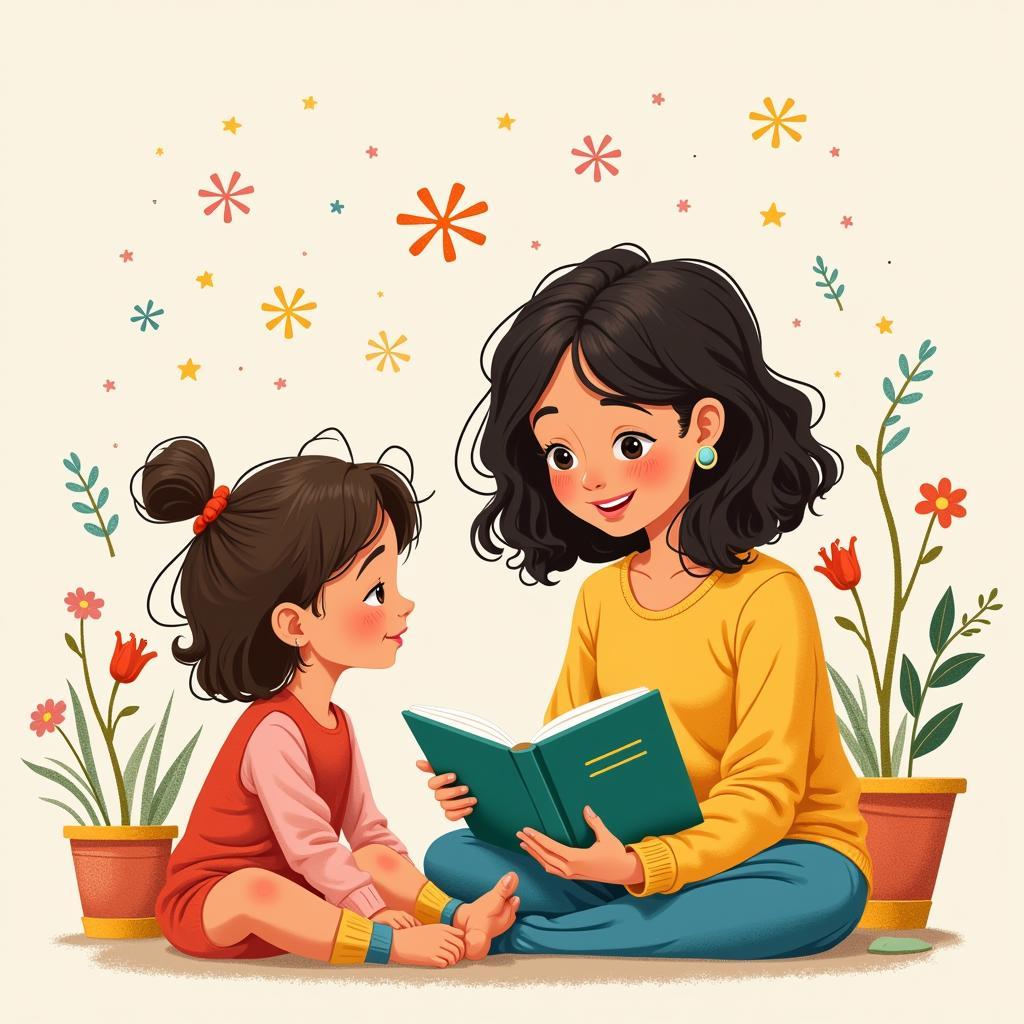“Uống nước nhớ nguồn” (When drinking water, remember the source), a proverb our ancestors taught from our early childhood, has deeply ingrained itself in the minds of every Vietnamese person. Right from kindergarten poems, the future seeds of the nation are sown with beautiful seeds of gratitude, love, and sharing. Analyzing kindergarten poems not only helps us understand the content and artistry better but also reveals the immense educational values hidden within. Are you looking to learn how to effectively analyze kindergarten poems? Let’s explore together! Read more about electronic lesson plans for preschool education modules.
Analyzing the Meaning of Kindergarten Poems From Multiple Perspectives
Analyzing kindergarten poems is not just about reading and understanding the content; it’s also an art. We need to examine the poem from various angles:
Content
- Theme: What is the poem about? Family love, homeland, nature, or friendship? Clearly identify the central theme of the poem.
- Meaning: What message does the author want to convey? What does the poem teach children? How are educational values expressed?
- Imagery: What images are used in the poem? What symbolic meaning do they hold? For example, the image of the “sun” can symbolize warmth, joy, and life…
Artistry
- Language: What is special about the language in the poem? Are there reduplicative words, compound words, or rhetorical devices used? Is the language appropriate for kindergarten age?
- Rhythm: Is the rhythm of the poem fast or slow, cheerful or somber? What effect does the rhythm have on expressing the content and emotions of the poem?
- Rhyme: How is rhyme used in the poem? Does the rhyme create harmony, making it easy for children to remember and memorize?
 Analyzing kindergarten poems about mothers
Analyzing kindergarten poems about mothers
I remember once observing a teacher teaching children the poem “Little Bird.” She not only recited the poem but also incorporated role-playing games, helping the children internalize and understand the content of the poem better. It was wonderful to see the children excitedly role-playing as little birds, jumping and flying happily.
Answering Questions About Analyzing Kindergarten Poems
Many parents and teachers often wonder how to effectively analyze kindergarten poems. Below are some frequently asked questions:
How to help children understand the meaning of a poem?
Use images, sounds, and games to illustrate the content of the poem. Encourage children to ask questions and share their feelings. You can also refer to communication content in kindergartens for more ideas.
Which poems should be chosen to suit the age group?
Choose poems with relatable content, simple and easy-to-understand language, suitable for children’s psychology and perception. According to Ms. Nguyen Thi Lan, a preschool education expert in Hanoi, choosing age-appropriate poems is extremely important. In her book “Educating Children Through Poetry,” Ms. Lan emphasizes that the poem needs to evoke curiosity and interest in children.
Integrating Spirituality in Kindergarten Poem Analysis
Vietnamese people traditionally value emotions and respect spiritual elements. Even in kindergarten poems, we can see this. For example, the poem “Ông trăng xuống chơi” (The Moon Comes Down to Play) not only simply tells about the moon but also expresses the closeness and intimacy between humans and nature, a spiritual concept from ancient Vietnamese times.
Conclusion
Analyzing kindergarten poems is a meaningful activity that helps children develop thinking, language, emotions, and aesthetics. Let’s together ignite a love for poetry and nurture the souls of the future seeds of the nation. Leave a comment, share the article, or explore more content on the “TUỔI THƠ” website. You can also learn more about specializing in building kindergarten kitchens in Hanoi or kindergarten 20/11 speeches. If you need further assistance, please contact Phone Number: 0372999999, or visit the address: 234 Hao Nam, Hanoi. We have a 24/7 customer care team.